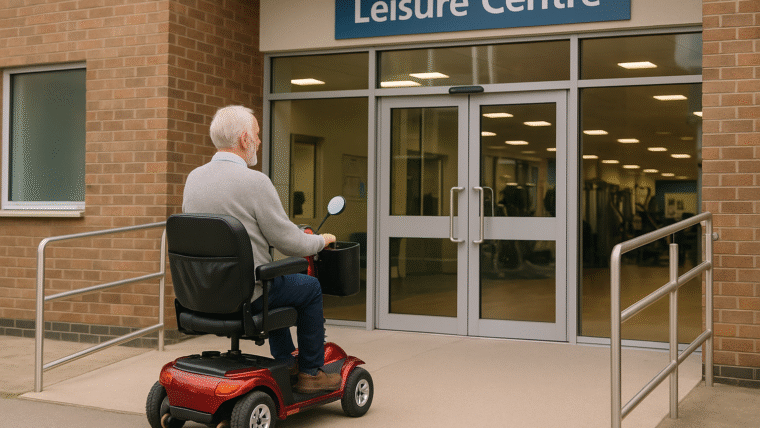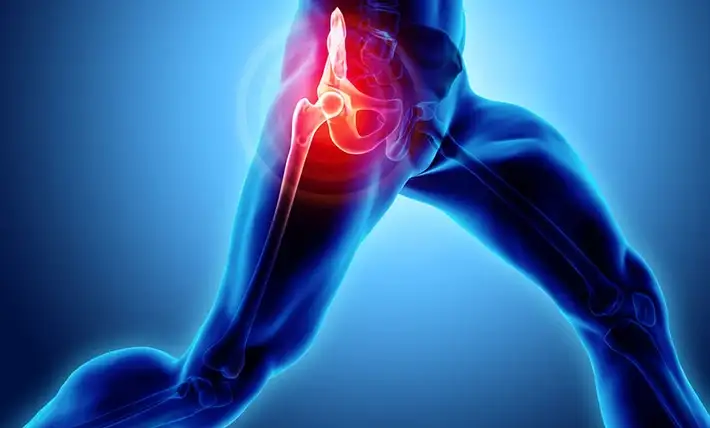
Injured and not sure how to get back to fitness safely?
Returning to fitness after a personal injury is one of the most difficult things you can do. It’s the single greatest risk to your health, mental stability, well-being, and happiness, and according to recent data, 56% of physically active people have experienced an exercise-related injury at some point.
Which is why…
When most people get injured, they rush their recovery only to get injured again.
This is where the right recovery plan can make all the difference.
Whether you’ve experienced a minor injury, like a strain or sprain, or you’re coming back from something more serious, like an orthopedic injury or spinal injury, personal injury litigators understand that the right recovery plan isn’t just about healing — it’s about getting back to your pre-injury level of fitness as safely and effectively as possible.
In this post, you’ll discover exactly how to return to fitness after an injury without setbacks.
Let’s get started!
Table of Contents
Here’s What’s Covered In This Post:
- The Worst Mistake People Make After Injury
- The 5-Phase Return To Fitness Framework
- Signs You’re Ready To Move To The Next Phase
- Common Recovery Mistakes
The Worst Mistake People Make After Injury
The biggest mistake that most people make after an injury is they try to jump back into their pre-injury workout routine. Someone gets injured, takes a week off, and then hits it as hard as they can.
Here’s the problem…
Your body has to rebuild the strength, flexibility, and endurance that it lost during recovery. When you stop working out, you lose muscle mass and cardiovascular fitness. After a light workout, muscles only need 24 hours to recover but a more intense workout may take two to three days or longer to repair.
But it gets even worse…
When you are immobilized after an injury, you experience muscle atrophy. This is the classic “if you don’t use it, you lose it” scenario. You can’t just pick up right where you left off – you have to follow a carefully calibrated progression plan.
Here’s another thing most people don’t know…
According to emerging data, over 35,000 people visit emergency rooms annually for injuries incurred during workouts in January alone, a 22% jump compared to the rest of the year. And the number one reason? Most of them return to the gym too soon.
The 5-Phase Return To Fitness Framework
Getting back to fitness after an injury isn’t difficult, but it does require patience and structure.
In the 5-phase Return To Fitness Framework, the entire process has been distilled down to its core components so that anyone can do it.
Phase 1: Medical Clearance & Assessment
Step one is always medical clearance.
You need to be cleared by your healthcare provider before you do anything else. It’s that simple.
A doctor or physical therapist needs to assess you to ensure you’re ready to begin exercising again. They will evaluate your range of motion, strength levels, joint stability, and pain response.
Don’t skip this step.
Phase 2: Active Recovery
Once you’ve been cleared to move forward, it’s time for active recovery.
Active recovery means doing easy, low-impact activity that moves blood without overstressing the injured area. Walking, swimming, or light cycling are all great examples.
The point here is not to push hard, just to move.
Phase 3: Gradual Strength Building
With medical clearance in hand and you’ve gotten used to active recovery, it’s time to start rebuilding strength.
Now remember…
Don’t be a hero. Begin with bodyweight exercises or very light resistance and focus on form and control. Your muscles need to re-learn movement patterns after being idle.
A good rule of thumb is to start at 50% of your pre-injury capacity and increase no more than 10% per week.
Clever right?
Phase 4: Progressive Overload
We’re almost there now!
After several weeks of consistent strength work, you can start introducing more gradual overload into your workouts. This means slowly increasing the intensity of your exercises over time.
The key here is patience. Make one change at a time – add weight, increase repetitions, decrease rest periods, or add sets. Don’t try to progress on multiple fronts at once or you will get injured again.
Phase 5: Return To Full Activity
The last phase is your return to normal training.
Even at this point, start at 70-80% of your old intensity and monitor how you feel over the course of several weeks. If you experience pain (not soreness), dial back immediately.
Signs You’re Ready To Move To The Next Phase
This is the part that most people struggle with…
How do you know if you’re ready to progress to the next phase of the plan? Here are a few telltale signs:
Pain-Free Movement: Your range of motion should be unrestricted and you should feel no pain. Discomfort is expected, but sharp pain is a sign to back off.
Symmetric Strength: Perform a strength test on your injured side compared to your uninjured side. They should be roughly equivalent. If there’s a large disparity, continue strength work.
Confidence In Movement: You should not feel like you’re compensating for your injury. Favoring the injured area is a sign you’re not ready.
Absence Of Swelling or Inflammation: The injured area should appear normal with no lingering swelling or inflammation.
Common Recovery Mistakes
Here are a few mistakes that can derail most injury recovery plans…
Ignoring Pain
Pain is your body’s warning signal. Research has found that 45% of all fitness-related injury diagnoses are either sprains or strains, many of which are avoidable by heeding the early warning signs.
Don’t try to power through the pain. If you feel sharp pain, stop and rest. Pushing through the pain is how minor injuries turn into more serious problems.
Inconsistent Training
Another common mistake is sporadic training. A few workouts a week followed by a week off and then going hard again will only set you back.
Stick to your program even if it feels like you’re not making progress.
Poor Nutrition and Sleep
Nutrition and sleep are just as important as training.
Your body repairs itself during rest, not during training. Make sure you’re getting enough protein for muscle repair, carbohydrates for energy, and at least 7-9 hours of quality sleep each night.
Skipping Warm-Ups and Cool-Downs
Look – you want to get in and get out. But warm-ups prepare your body for movement and cool-downs help prevent injury.
Spend at least 5-10 minutes on each. Your body will thank you later.
Building A Comeback Plan
So now that you know the framework, how do you create an effective workout plan for yourself?
First, create specific goals, a realistic timeline, and a progress tracking system.
If you were running five miles before injury, start with two or three. Give yourself at least 4-6 weeks for minor injuries or 3-6 months for moderate injuries.
Second, keep a simple workout log. Note how you feel before, during, and after each workout. Any pain or discomfort? Any limitations on performance? Tracking this info will help you spot patterns and adjust as needed.
Finally, consider working with a professional if you have the resources. Physical therapists and certified trainers who specialize in injury recovery can spot problems you may not.
Wrapping Things Up
Getting back to fitness after a personal injury is challenging, but with the right approach it’s possible.
The five-phase Return To Fitness Framework gives you a simple and proven path forward. It starts with medical clearance, moves to active recovery, and then progresses through gradual strength building, progressive overload, and finally a return to full activity.
Keep these three things in mind:
- Don’t rush the process — while 75% of people stop exercising while they’re recovering, those who jump back in too soon are just as likely to get injured again
- Listen to your body and respect pain signals
- Prioritize form over intensity
- Seek out professional help when needed
- Stay consistent even if progress feels slow
The good news is that, if done correctly, coming back from an injury can make you stronger than before. Many athletes report that the process forces them to re-learn proper form, increases their body awareness, and leads to smarter training habits long-term.
Take your time, follow the framework, and believe in the process. Your comeback story starts today!


